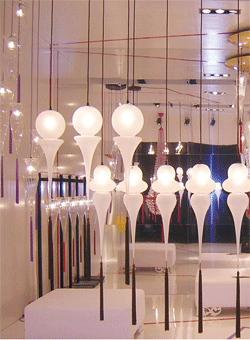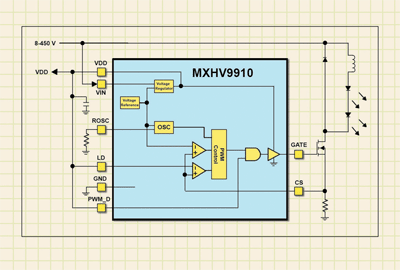Powering LED lighting systems
LED-based lighting systems are poised to evoke a transformation in the future of general lighting, and may even pave the way for radical changes in building electrical design. To truly deliver the promised efficiency, reliability, and performance benefits of solid-state lighting (SSL), the end-to-end design of the lighting system must be carefully evaluated… http://www.nxtbook.com/nxtbooks/hearst/projectlighting_200806/index.php?startid=5

Dimming doesn’t mean darker
As concerns about energy use skyrocket, and with regulations such as California’s Title 24 becoming more widespread, many businesses are looking for ways to cut energy use and energy costs. Unfortunately, many believe the only options include switching from their bright HID lighting systems to fluorescent systems that are more efficient but less bright… http://www.nxtbook.com/nxtbooks/hearst/projectlighting_200806/index.php?startid=9

Cost-effective LED-drive ICs energize lighting revolution
Today, the efficacy of commercial LEDs is approaching that of fluorescent lighting (70 to 80 lumens/W). Fluorescent lighting is a mature technology and little improvement is likely to occur in the near future, while LED lumens/W has been increasing at 20x every 10 years, and is projected to continue to do so… http://www.nxtbook.com/nxtbooks/hearst/projectlighting_200806/index.php?startid=12

Viewpoint
SSL’s missing element
While the market for solid-state lighting (SSL) is now attaining critical mass, the basic technology and its potential for changing the way we illuminate our homes, businesses, and cities has been understood for several years. That being the case, it is somewhat surprising that one of the fundamental elements upon which good engineering is based has been missing for SSL: standards.
This lack of standards has not gone entirely unnoticed. Over two years ago, the U.S. Department of Energy began work trying to develop standards for SSL, and worked with many existing standards groups, such as ANSI, IESNA, and UL, to try and bring these standards into existence. And some progress has been made; this year, both ANSI C78-377-2008, Specification for the Chromaticity of Solid-State Lighting Products and IESNA LM-79, Approved Method for the Electrical and Photometric Testing of Solid-State Lighting Devices were released. But the groups are still working on basic standards for technology definitions, lifetime, and safety.
There are reasons why creating SSL standards is hard. In an article on the Electronic Digital Signage channel of SIGNWEB (www.signweb.com), M. Nisa Khan notes that one problem is that “LED lamps suit diverse applications, both existing and new; each may have certain standards and requirements. Further, LED luminaires have various levels of integrated components (subassemblies), each requiring its own standards level, that is, if the subassemblies are to become commodities.” Recognizing that SSL technology is certainly no more complex than that of TVs, computers, or cell phones, she points out that those devices “didn’t replace technologies that provided the same functionalities; thus, they didn’t contend with an existing infrastructure and historic market base.”
Overcoming such barriers is not impossible, but it takes will, a non-academic sense of urgency, and the ability to organize to get the job done. This year at the Society for Information Display’s Display Week in Los Angeles, an industry group was formed to get things moving for organic LEDs. The OLED Association (www.oled-a.org) is rallying manufacturers and other interested parties to put standards and information dissemination on a fast track, and may serve as a model for others who seek the missing element.
Richard Comerfordrcomerford@hearst.com
For more on Project Lighting, visit www.electronicproducts.com/projectlighting
Advertisement
Learn more about Electronic Products Magazine





